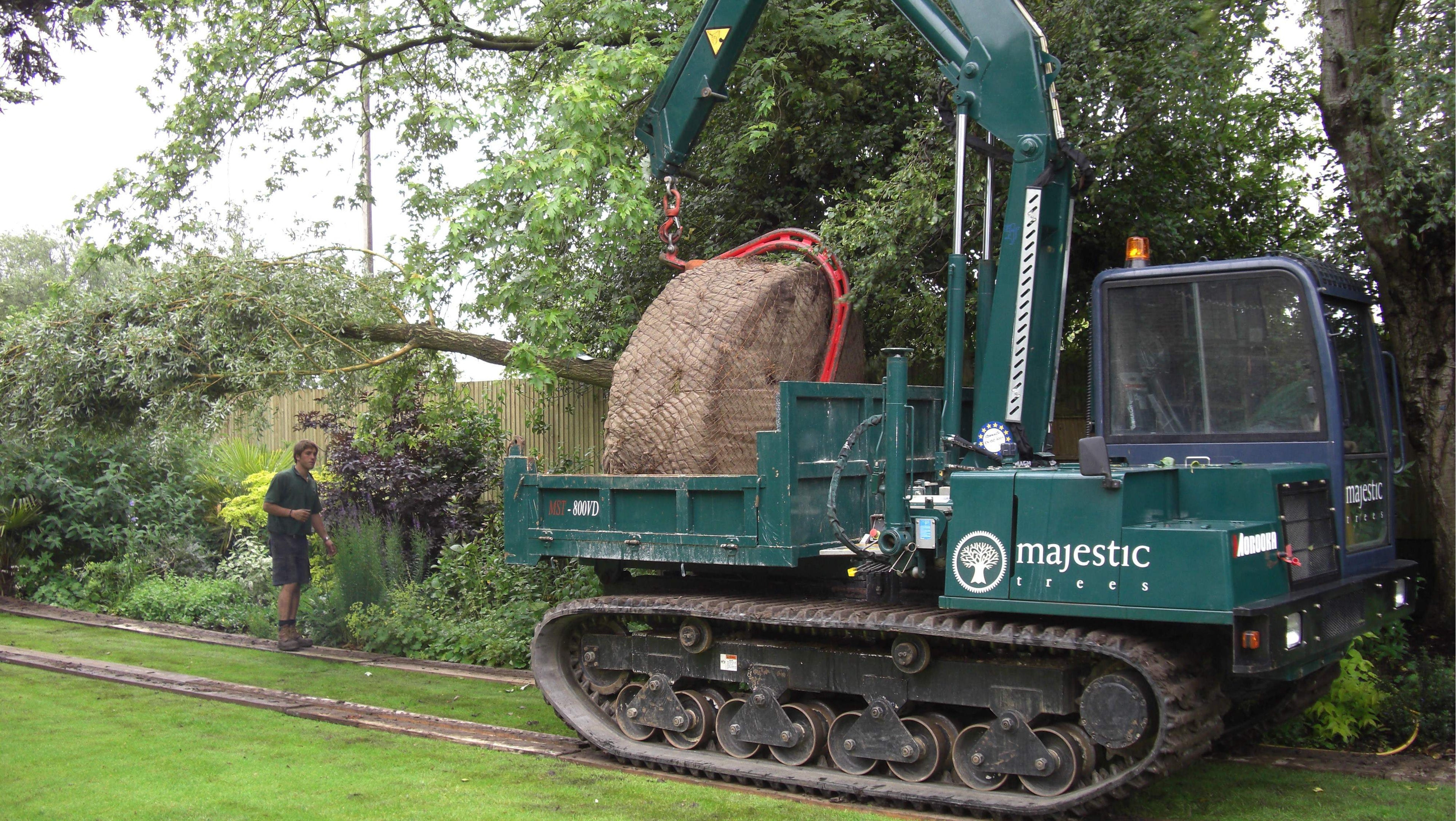
DELIVERY & PLANTING
FAQs
Plan Arrival FAQs
If you want to plant in the same place, then yes. Simply stump grinding to below soil level isn’t enough, as there will be considerable mass remaining in the lower soil layers. Definitely bring it up with your advisor. If the diameter of the stump is less than 10cm, and we are bringing a small digger to site to plant your tree(s), it’s likely we can include in the job detail to remove the stump with the digger. Otherwise you will need to arrange to have it removed prior to the planting date. You will normally want to have this done by a tree surgeon. If you haven’t got a local recommendation, a good place to start iswww.trees.org.uk, where you can find accredited ones in your area. It is vital to agree specifications for the stump removal before you engage a company, specifically, the below soil depth to which you need the stump removed. Your advisor can provide guidance on this, but generally it will be 400-500ml depth. Do not be alarmed if a contractor tells you this can’t be done; translation here is that they do not have the equipment to do this. Once you have found a suitable contractor, it’s important also to specify that you need to see the finished work, and measure the depth, before the hole is infilled!
It depends on the size (obviously) usually the maximum pot size of tree a nonprofessional can plant is about 85L. Normally two fit, strong men can just about manoeuvre a tree of this size into position. Be sure to prepare ahead and order the correct materials. You can download a guide here.
Of course we can, but we need to plan for that. Be sure to ask your advisor to request it so we’re sure to have the right manpower and equipment on board.
That depends. And by advance request only please! Trees and wallpaper don’t mix, so we need to be very careful -and realistic -with our game plan. Discuss it with your advisor beforehand so we come properly equipped for the job.
Honestly? Probably not. Unless it’s a small piece of hedging. A tree up to 85 litres can usually be manoeuvred around by leaning it over and rolling the rootball along the ground whilst someone guides and supports the crown.
Delivering trees without damage requires specialist handling, and whilst there are a few specialist carriers for trees, they are expensive services to use and rarely provide any assistance with offloading the tree upon arrival. That is why we personally deliver all of our trees, using our own lorries and very experienced drivers, who can provide whatever assistance is needed upon arrival (by prior arrangement) to get the tree offloaded and settled into its final position. Often we are able to combine loads, but sometimes, due to the size of the tree or order, it is a dedicated journey.
Costs will vary depending on the weight to be lifted, the height to be lifted over, and the reach required. Typically, cranes are hired on a daily rate basis, with costs often exceeding £1000. However, do bear in mind that there is often a significant savings on labour costs to be had, because with a crane on site, our planting equipment as well as the trees can be quickly lifted into position, and the muckaway (displaced soil) can usually be lifted out rather than painstakingly barrowed out, which is often the case with difficult access. It is also worth considering whether there are other projects/jobs that could be accomplished whilst the crane is on site. For example, in the past we have had customers use the opportunity to lift landscape pallets, hard landscaping materials, hot tubs, etc. on the same day.
Sometimes, depending on what type of labour is called for. If extra manpower is required to manoeuvre the tree from offload to planting position, and you have a landscaping team already on site, then it’s worth mentioning this to your advisor when discussing plans for planting. It is important to emphasise here that it is important that any person you provide as additional labour be strong and physically fit and prepared to listen to and follow instructions very carefully. It is very easy for a well-meaning but inexperienced person to cause serious damage to a tree, which is disappointing for everyone!
Usually. It is extremely important, though that the holes or ‘tree pits’ are dug to our exact specifications, and that the removed topsoil is placed near the pits exactly as we instruct. It can add considerably to the labour cost if the holes are too deep or too shallow. And once the hole is dug too deep, it can be difficult to correct, as the soil put back in the hole will not be compacted enough to support the weight of the tree, resulting in the tree often sinking below ground level over time, which will invalidate your warranty.

